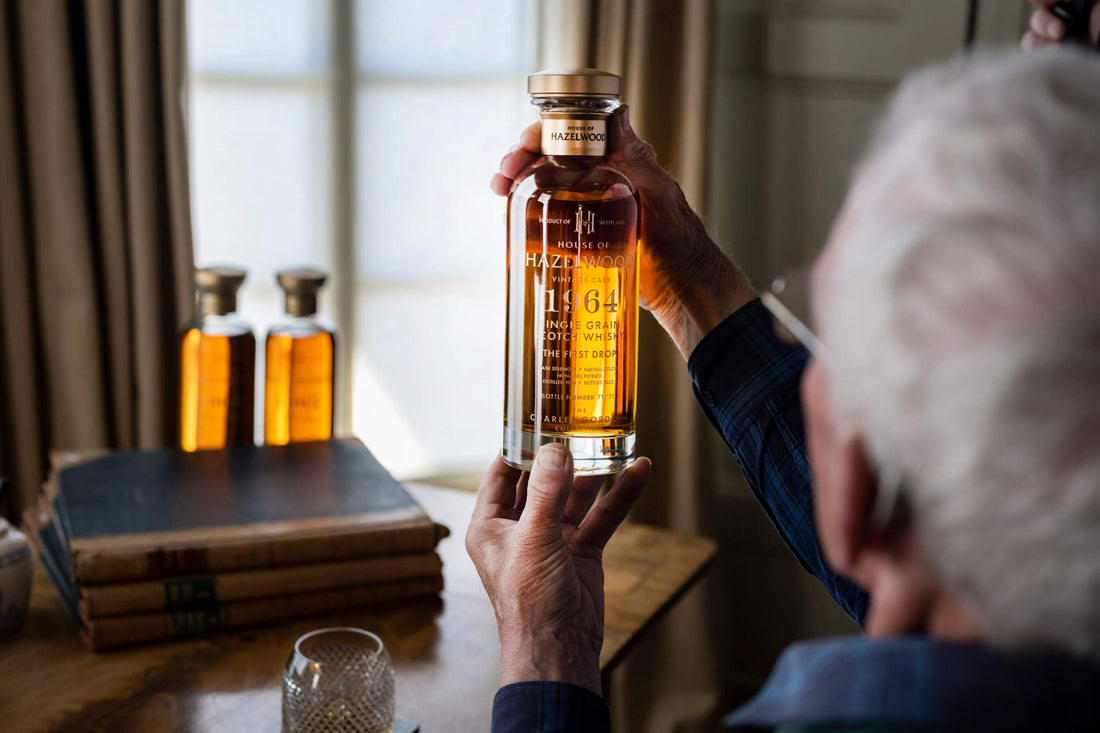For many years, a common misconception has dominated thinking for those unfamiliar with whisky production: largely, that if you’re looking for quality, you should buy a single malt.
Of course, for experienced collectors and enthusiasts, this is not the case. And it seems that this long-held stance is now somewhat shifting – with blended and single grain whiskies increasing both in ubiquity and popularity.
So, what’s behind this growth in grain and what do single grain whiskies bring to the table?
Let’s begin with the basics.
A single malt whisky is produced at an individual distillery with only malted barley in a pot still, compared to a single grain which is distilled from grains instead (often corn, wheat, and rye) in a column still. A blend on the other hand contains a combination of one or more single malt whiskies and one or more single grain whiskies from different distilleries.
This may lead a newcomer to assume (incorrectly) that the simplicity of distillation and unique provenance of a single malt signifies purity, authenticity, and, thus, value.
However, perhaps through improved knowledge, product visibility, or a more adventurous market, this myth is beginning to unravel.

First-time buyers and collectors are now becoming increasingly aware of the unique taste profiles associated with the usage of different grains.
Wheat, for example, can be used to round a whisky’s edges – providing a soft smoothness, with undertones of baked bread and honey.
Rye provides a richer depth of pepper and licorice flavors and is often associated with a drier finish.
While corn doesn’t have a strong taste profile but adds a subtle lightness which elevates and showcases other notes.
A single grain can thus achieve a taste profile that is completely original – providing space for experimentation and expression.
Our Single Grain Scotch The Cask Trials for example, matured for 53 years in a single sherry butt, captures an uncommon union of European oak and Girvan grain – giving it a distinctive ruby tint and complex taste profile.
Ephemeral. Rare. And undoubtedly unique.
Equally, when it comes to blends, far from diluting a single malt’s flavor, single grains are used to complement, soften, or strengthen certain characteristics.
New chapters are written into the whisky’s story, capturing the histories and landscapes of the spirit’s various components – allowing a producer’s expertise and experience to come to the fore.

Decades of tradition, heritage, and know-how are distilled into every drop – until the perfect balance (blend) is identified. It’s within this process that true quality is often found.
So, while single malt scotch may remain the whisky of choice for those new to the spirit world, single grains and blends are certainly beginning to make their mark, as awareness and understanding improves across the market.
The popularity of our first Single Grain release, The First Drop, which sold out in a matter of weeks, demonstrates that the single grain is already held in very high esteem amongst our Keyholders and buyers. And as collectors, investors, and enthusiasts continue to discover the subtleties, depth, and unique profiles these whiskies offer, this demand is only set to grow.


